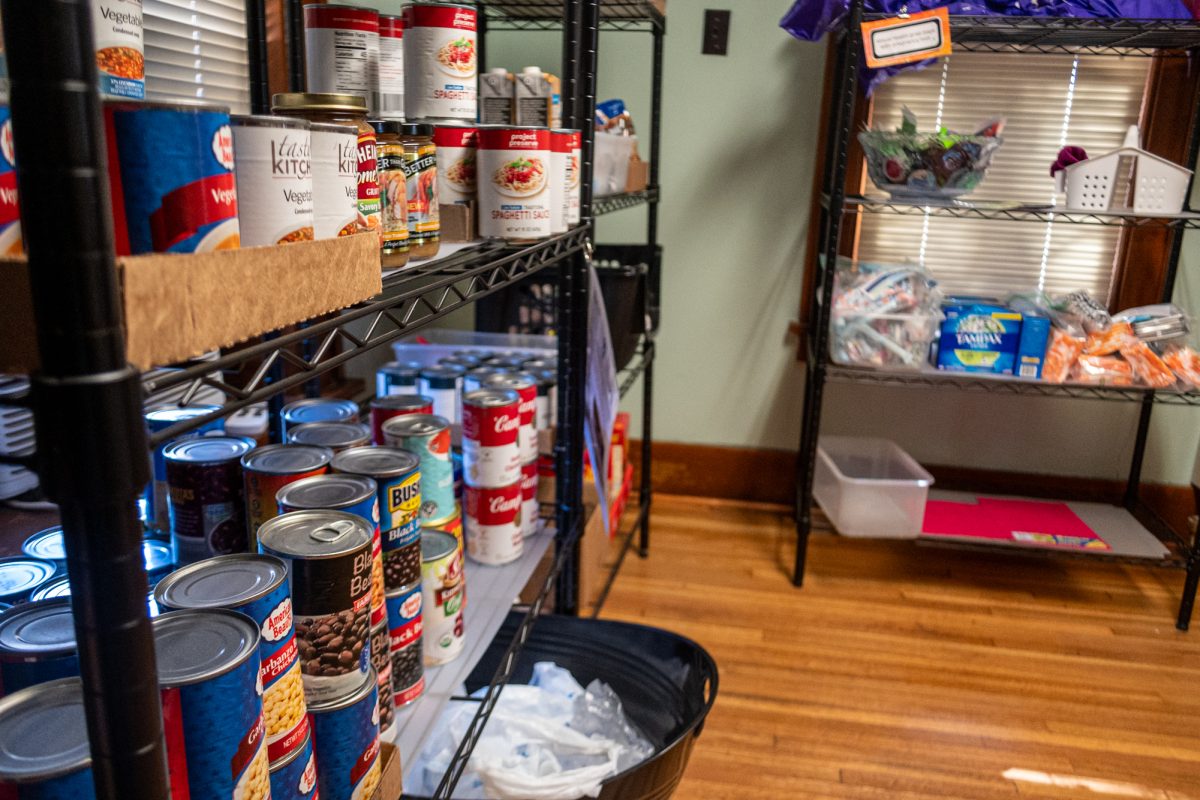Small towns key to brain drain
June 28, 2000
According to a special report in The Des Moines Register last month, 51 percent of Iowa college grads plan to move out of the state. This phenomenon is known as the Iowa brain drain. It seemed to me that this is far from a recent phenomenon, so I decided to look into the stories of Iowans who have gone to bigger and better things elsewhere over the past century. Iowans have been a force in the entertainment industry in the United States since the very beginning. Wiota farmer Oil Coomes, author of “Hawkeye Harry” and “Tiger Tom” was one of the most popular dime novelists of the 1880s. Harry Langdon, from Council Bluffs, along with Charlie Chaplain, Buster Keaton and Harry Lloyd were the big four of the silent film era. Buffalo Bill Cody was from LeClaire. Meredith Willson was born in Mason City, a.k.a. River City, in 1902. He left in 1919 to study music in New York. Glenn Miller was born in Clarinda in 1904. Marion Morrison, better known as John Wayne, is from Winterset. Advice columnists and twin sisters Ann Landers and Abigail Van Buren were born and raised in Sioux City. Oscar-winner Donna Reed was born in Denison in 1921. Before she left for Hollywood by train at age 16, she won a blue ribbon at the state fair for her biscuits. Johnny Carson was born in Corning in 1925. Jerry Mathers of Sioux City played Theodore Cleaver on television, and who could forget Terry Kiser of Council Bluffs who played Bernie in “Weekend at Bernie’s.” Other famous folks include President Herbert Hoover from West Branch, FDR’s Vice President Henry Wallace from Adair County, first ladies Mamie Eisenhower from Boone and Lou Henry Hoover from Waterloo, and aviator Clarence Chamberlain of Denison, who beat Charles Lindbergh’s long-distance flight record and flew the first transatlantic mail flight in 1927. Lee DeForest, a Council Bluffs native, patented the vacuum tube. Many food items were born in Iowa, too. The Eskimo Pie is from Onawa, the hamburger is from Clarinda, the first Delicious apple tree was grown in Madison County and everyone’s favorite Navy brass Cap’n Crunch was born in Cedar Rapids in the early 1960s. When I looked over this list, one thing jumped out at me. The vast majority of these people are from places that test your Iowa geography knowledge. They are from towns and small cities, not from Des Moines. The strength of Iowa in the past has been its towns. If you drive by these towns today, it’s sometimes hard to believe that at one point in time they had movie theaters, hardware stores, lumber yards and their own schools for their larger populations. The change in these towns is due almost entirely to improvements in the automobile and farm equipment. Around the 1950s, cars became faster, more reliable and more people had them. More roads were being paved as well, which made traveling in general a whole lot easier. People could go farther in search of cheaper prices and harder to find goods, which took a toll on local businesses. At the same time farm equipment was getting better, which enabled fewer people to farm more land. This further reduced the population of the small towns. The other important feature of Iowa is that it is right in the middle of the country. People who passed through the state are just as famous as those who started here. The Rev. John Todd House in Taber was a major stop on the underground railroad. Brigham Young was elected president of the Mormon Church in Council Bluffs in 1847. Ronald Reagan lived and worked in Iowa as a sports radio announcer. Richard Nixon was stationed at a naval air force base in Ottumwa during World War II. The Everly Brothers got a professional start on KMA in Shenandoah. The golden spike that marked the completion of the first transcontinental railroad was driven in 1869 in Council Bluffs. Everyone who wanted to get from one side of the country to the other had to go through Iowa first. This brought a wide variety of people from all sorts of places through Iowa towns. The trains, along with steamboats, made Iowa the crossroads of the nation, making the towns along the way vibrant centers for commerce. The development of the airplane and the interstate highway system has circumvented many of these towns in much the same way that the railroad did to the countless lost and forgotten towns of 19th century Iowa. Today, people looking to go from Los Angeles to New York hop on a Boeing 747 and within a few hours fly over all the places in between. The Register’s survey found the main reasons college grads give for leaving Iowa are the lack of big cities, the state is too rural, little natural splendor, few high-tech jobs and expensive airfare. The biggest misconception held by the people looking for solutions to the brain drain is that Iowa cities don’t compete with other regional cities anymore. The truth is that they never did compete with Minneapolis, Chicago, St. Louis and Kansas City. The real problem today is that Iowa is more rural than it used to be. The small towns of Iowa are much smaller than in the past and they no longer have the hustle and bustle of the railroad era. Perhaps the solution to the Iowa brain drain is not the daunting task of trying to restore Des Moines to the glory it never had, but rather to return Iowa to a crossroads of America through a strong effort to attract national distributors to the small towns and cities of Iowa. Maybe then other businesses will follow, allowing small town Iowa to thrive again.
Erik Hoversten is a senior in math from Eagan, Minn.






